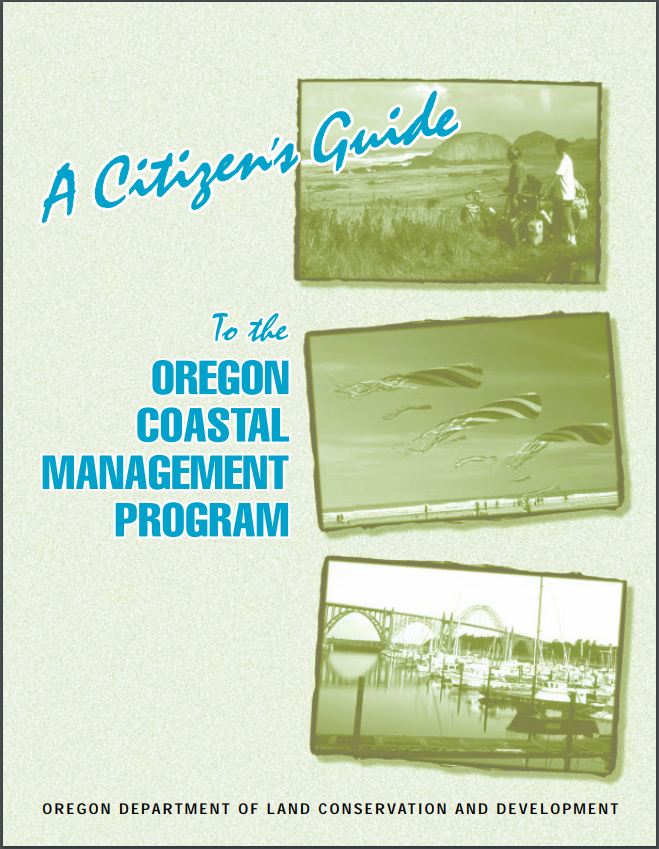Ocean Policy in Oregon
 Strong public interest has a long history of shaping ocean planning and management in Oregon. This public influence has impacted the use and protection of coastal and ocean resources.
Strong public interest has a long history of shaping ocean planning and management in Oregon. This public influence has impacted the use and protection of coastal and ocean resources.
Today, Oregonians share concerns about the future health of the marine environment and its ecosystems. The Oregon Ocean Resources Management Program provides the state with a means to address these concerns in an open, informed, and comprehensive way.
This page introduces Oregon's Ocean Resources Management Program which has many parts. In addition to laws, policies, and activities contained in the program, this site describes the physical setting for the Ocean Program and provides links to a wide variety of interesting and informative sites in government agencies and academia.
Oregon's ocean area stretches approximately 360 miles from the mouth of the Columbia River to the California border and extends some 14 to 40 miles offshore. This area is part of and influenced by oceanographic and atmospheric forces that affect the entire Pacific Ocean. Because the natural setting of the Oregon Coast and ocean determine the ecological conditions and human uses of resources, effective policy and management requires an understanding of the setting and forces that affect this dynamic environment.
Visit the Regional Ocean Planning page for information about the West Coast Regional Planning Body, West Coast Ocean Partnership, and West Coast Ocean Data Portal.
Statewide Planning Goal 19: Ocean Resources
"To conserve marine resources and ecological functions for the purpose of providing long-term ecological, economic, and social value and benefits to the future generations." - Statewide Planning Goal 19
pdf Goal 19: Ocean Resources (23 KB)
Since 1973, Oregon has maintained a strong statewide program for land use planning. The foundation of that program is a set of nineteen Statewide Land Use Planning Goals. The goals express the state's policies on land use and related topics, such as citizen involvement, housing, and natural resources.
Statewide planning goals 16-19 all focus on the diversity of coastal and marine environments around the state. Goal 19 is the primary goal focusing on the stewardship of offshore ocean resources and uses within Oregon's Territorial Sea. Since 1977, this goal has guided Oregon's policy and management of ocean resources, and it was updated in late 2000 by the Land Conservation and Development Commission. It carries the same weight as an Oregon Administrative Rule, and it provides standards and a framework for managing potentially damaging human activities that may impact ocean resources or other ocean users. This is probably the most important "applicable element" of the Oregon Coastal Management Program referred to in the law.
Regulatory Road Map

This page provides an explanation of how management of the Oregon Coastal Management Program functions, including the different agencies and their roles in reviewing and approving activities.
For a citizen's guide to the Oregon Coastal Management Program, visit this pdf link (1.99 MB) . (PDF)




















